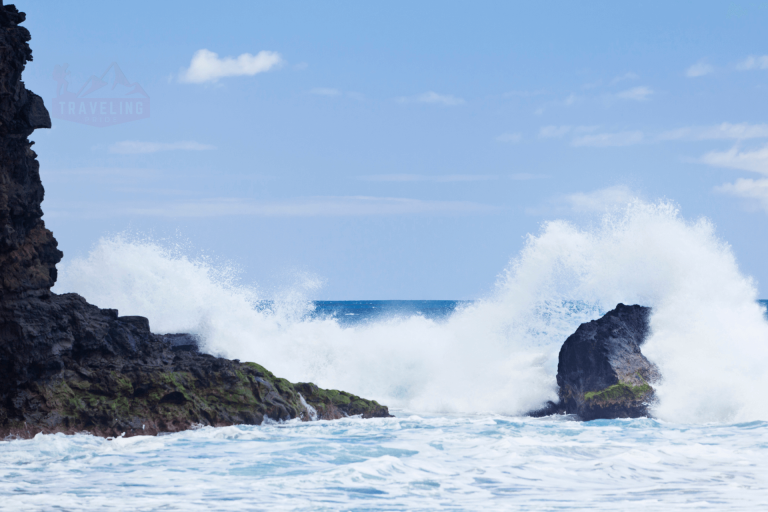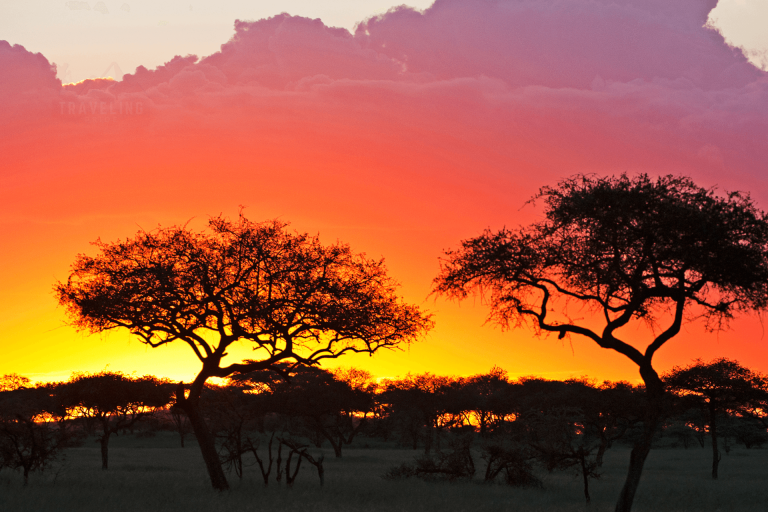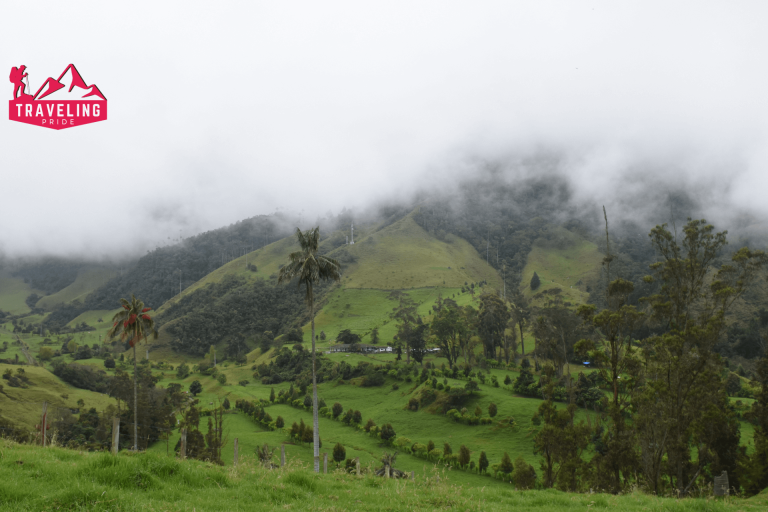Best Hikes At Zion National Park
Tucked away in southern Utah, Zion National Park is a haven for adventure seekers and outdoor enthusiasts. Zion is known for its stunning red cliffs, deep canyons, and diverse ecosystems, and Zion attracts millions of visitors annually. The park’s history dates back to its establishment in 1919, making it one of the oldest national parks in the United States. Whether you’re a seasoned hiker or a casual nature lover, Zion offers a unique experience that will leave you in awe.
Zion National Park is more than just a collection of trails; it’s a testament to the natural beauty and geological wonders of the American Southwest. From its towering sandstone cliffs to its lush valleys, the park offers a variety of landscapes that are perfect for exploration. In this blog post, we’ll guide you through the top hikes at Zion, provide essential tips for a safe and enjoyable adventure, and share additional activities the park offers.
By the end of this article, you’ll be equipped with all the information you need to plan an unforgettable trip to Zion National Park. Whether you want to conquer challenging trails or enjoy the breathtaking scenery, Zion has something for everyone. Let’s dive into the best hikes that Zion National Park has to offer.
The Top 10 Hikes at Zion
Angel’s Landing
Angel’s Landing is arguably the most famous hike in Zion National Park, and for good reason. This 5.4-mile round trip offers breathtaking views that are not for the faint of heart. The trail is strenuous and includes a series of steep switchbacks known as “Walter’s Wiggles.” The final half-mile involves navigating a narrow ridge with chains to assist hikers.
The best time to hike Angel’s Landing is in the early morning or late afternoon to avoid the midday heat. Be prepared for a challenging ascent, but rest assured that the views from the top are worth every step. From the summit, you’ll be rewarded with panoramic vistas of Zion Canyon that will leave you speechless.
Safety is paramount on this hike. Make sure to wear sturdy footwear, bring plenty of water, and stay focused on the trail. Angel’s Landing is not recommended for those who fear heights or vertigo. However, this hike offers an unparalleled adventure for those who are up for the challenge.
The Narrows
The Narrows is another iconic hike in Zion National Park. It offers a unique experience of wading through the Virgin River. Depending on your starting point and desired distance, this hike can be as short as a few miles or as long as 16 miles. The most popular route is the Bottom-Up hike from the Temple of Sinawava.
The best time to hike The Narrows is between late spring and early fall when water levels are lower. However, always check the weather forecast and river conditions before setting out, as flash floods can occur. The hike involves walking through water, so wearing appropriate footwear and carrying a sturdy walking stick is recommended.
One of the highlights of The Narrows is the stunning slot canyon scenery. Towering walls of sandstone rise high above the river, creating a surreal and otherworldly atmosphere. This hike is perfect for those looking to immerse themselves in the natural beauty of Zion’s unique landscapes.
Observation Point
For those seeking a less crowded alternative to Angel’s Landing with equally stunning views, Observation Point is a must. This 8-mile round trip hike takes you to one of the highest viewpoints in Zion National Park, offering expansive views of the canyon below.
The trail begins at the Weeping Rock Trailhead and gains over 2,100 feet in elevation. Along the way, you’ll pass through Echo Canyon, a narrow and picturesque hike section. The final ascent to Observation Point rewards hikers with a panoramic view, including Angel’s Landing far below.
Observation Point is best hiked in the early morning or late afternoon to avoid the heat. The trail is challenging but well worth the effort for the breathtaking views at the top. This hike is ideal for those looking to escape the crowds and enjoy a more peaceful and rewarding experience.
Emerald Pools
The Emerald Pools is a great choice for a more moderate and family-friendly hike. This trail system includes three different pools—Lower, Middle, and Upper Emerald Pools—each with its unique charm. The round trip to all three pools is approximately 3 miles.
The trail begins at the Zion Lodge and follows a well-maintained path to the Lower Emerald Pool, where a waterfall cascades over a cliff. From there, you can continue to the Middle and Upper Pools, which offer more secluded and tranquil settings.
The best time to hike the Emerald Pools is in the spring or fall when the temperatures are cooler. This hike is perfect for families and those looking for a more relaxed experience while enjoying Zion National Park’s beauty. Make sure to bring a camera, as the pools and surrounding scenery are incredibly photogenic.
Hidden Canyon
Hidden Canyon offers a less crowded but equally rewarding adventure for those looking to explore a side canyon of Zion National Park. This 2.5-mile round trip hike starts at the Weeping Rock Trailhead and includes a series of switchbacks before reaching the mouth of Hidden Canyon. Along the way, you’ll encounter narrow paths with chains to assist you, similar to Angel’s Landing.
The best time to hike Hidden Canyon is in the early morning or late afternoon to avoid the heat. With some exposed sections, the trail can be challenging, so ensure you have proper hiking shoes and plenty of water. Once you reach the canyon, you’ll find a lush, beautiful area with hanging gardens, interesting rock formations, and fewer crowds.
Hidden Canyon is perfect for those looking for solitude and adventure. The relatively short distance makes it accessible, while the chains and narrow paths add a thrill for more experienced hikers. It’s a hidden gem that provides a unique perspective of Zion’s diverse landscapes.
Canyon Overlook Trail
The Canyon Overlook Trail is one of the shorter and more accessible hikes in Zion National Park, making it ideal for families and those with limited time. This 1-mile round trip hike offers spectacular views of lower Zion Canyon and is often less crowded than other popular trails.
The trailhead is located near the east entrance of the Zion-Mount Carmel Tunnel. The path includes some rocky steps and guard rails, making it suitable for most visitors, although caution is needed in certain sections. The hike’s highlight is the overlook, which provides stunning panoramic views of the canyon, Pine Creek, and the West Temple rock formation.
The best time to hike the Canyon Overlook Trail is during the morning or late afternoon when the lighting enhances the scenery. It’s a great spot for photography and offers a rewarding view for relatively little effort. This hike is perfect for a quick yet memorable adventure in Zion.
The Subway
Due to its popularity and unique terrain, The Subway is a challenging and adventurous hike that requires a permit. There are two ways to experience It: the more strenuous “Top-Down” route, which is a 9.5-mile trip involving rappelling, swimming, and navigating through narrow slots, and the “Bottom-Up” route, which is a 9-mile round trip that avoids the technical sections but is still intense.
The hike offers a stunning visual journey through sculpted rock formations, emerald pools, and waterfalls. Of course, the highlight is the Subway section itself, which resembles a tubular tunnel carved by the Virgin River.
Given the complexities of this hike, it’s essential to be well-prepared. Bring appropriate gear and lots of water, and be ready for a backcountry adventure. The Subway is best hiked from late spring to early fall when the water levels are manageable. This hike is ideal for experienced adventurers looking for a unique and physically demanding experience.
Kolob Arch
Kolob Arch, located in the remote Kolob Canyons section of Zion National Park, is one of the most giant freestanding arches in the world. The hike to Kolob Arch is approximately 14 miles round trip, making it a strenuous but rewarding journey.
The trailhead is at Lee Pass, and the hike takes you through the stunning La Verkin Creek Canyon. Along the way, you’ll encounter diverse landscapes, including red rock cliffs, lush valleys, and serene streams. The final segment to the arch involves a short detour off the main trail.
Kolob Arch is best visited in the spring and fall when temperatures are more moderate. Given the length and difficulty of the hike, proper preparation is essential, including bringing enough food, water, and navigation aids. This hike offers a sense of solitude and the opportunity to experience a less-traveled part of Zion National Park.
Weeping Rock
Weeping Rock is a short, easy hike perfect for visitors of all ages and fitness levels. This 0.4-mile round trip trail leads to a unique geological formation where water seeps out of the rock, creating a lush hanging garden.
The trail begins at the Weeping Rock Trailhead and is well-paved, making it accessible for wheelchair users and those with strollers. The highlight is the “weeping” rock, where water continuously drips down, nourishing various plants and creating a serene, almost mystical atmosphere.
Weeping Rock is ideal for a quick, refreshing break and offers beautiful views without requiring much effort. It’s best visited in the spring and summer when the greenery is most vibrant. This hike is perfect for families and those seeking a peaceful, easy experience in Zion National Park.
Hidden Canyon
Hidden Canyon is a lesser-known gem in Zion National Park, offering a more secluded and adventurous experience. This 3-mile round trip hike begins at the Weeping Rock Trailhead and includes a series of steep switchbacks before reaching a narrow canyon.
The trail to Hidden Canyon is moderately strenuous and includes sections with chains for added safety. Once you reach the canyon, you’ll have the opportunity to explore its hidden nooks and crannies, including a natural arch and hanging gardens.
The best time to hike Hidden Canyon is in the early morning or late afternoon to avoid the heat. This hike is perfect for those looking to escape the crowds and discover a more hidden side of Zion National Park. Make sure to wear sturdy footwear and bring plenty of water for this adventure.
Tips for Hiking Safely at Zion
Preparation and Packing Essentials
Before embarking on any hike in Zion National Park, it’s important to be well-prepared. Start by researching the trails you plan to hike and checking the weather forecast. Make sure to pack essentials such as water, snacks, a map, a first aid kit, and a fully charged phone.
Wearing the right gear is crucial for a safe and enjoyable hike. Opt for sturdy, comfortable hiking boots with good ankle support. Dress in layers to accommodate changing weather conditions, and don’t forget to bring a hat, sunglasses, and sunscreen to protect yourself from the sun.
Hydration is key, especially in Zion’s arid climate. Carry at least 2 liters of water per person and more for longer hikes. Consider using a hydration pack for easy access to water while on the move. Staying properly hydrated will help you maintain energy levels and prevent heat-related illnesses.
Staying Safe on the Trails
Safety should always be a top priority when hiking in Zion National Park. Stick to established trails and avoid shortcuts, leading to dangerous situations and environmental damage. Be mindful of your surroundings and watch for hazards like loose rocks or slippery surfaces.
If you’re hiking a trail with steep drop-offs or exposed sections, take your time and use caution. Keep a safe distance from the edge and use handrails or chains when available. If you’re hiking with children or inexperienced hikers, ensure they understand the importance of staying on the trail and following safety guidelines.
It’s also important to be aware of wildlife in the park. While encounters with animals are rare, it’s best to keep a safe distance and never feed or approach them. Carrying bear spray is a good precaution, especially if you’re hiking in more remote areas of the park.
Leave No Trace Principles
One of Zion National Park’s core values is preserving its natural beauty for future generations. To help protect this incredible landscape, follow the Leave No Trace principles. This includes packing out all trash, staying on designated trails, and respecting wildlife and vegetation.
Avoid picking plants or disturbing natural features, as this can have a lasting impact on the ecosystem. When using restroom facilities, make sure to use designated areas or pack out waste if necessary. Following these principles can help ensure Zion remains a pristine and beautiful destination for years.
Beyond Hiking: Other Activities in Zion
Rock Climbing
Zion National Park is a world-renowned destination for rock climbing, offering a variety of routes for climbers of all skill levels. The park’s sandstone cliffs provide challenging and rewarding climbs, with popular spots including Angel’s Landing and Moonlight Buttress.
Whether you’re a seasoned climber or a beginner looking to try something new, Zion has something to offer. Consider hiring a guide or taking a climbing course to ensure a safe and enjoyable experience. Always check local regulations and conditions before embarking on a climb.
Rock climbing in Zion allows you to experience the park’s stunning landscapes from a unique perspective. The sense of accomplishment and breathtaking views from the top make it an unforgettable adventure for outdoor enthusiasts.
Canyoneering
For those seeking a more adventurous experience, canyoneering in Zion National Park is a must. This activity involves navigating through narrow canyons using a combination of hiking, climbing, and rappelling techniques. Zion is home to some of the best canyoneering routes in the world, including The Subway and The Narrows.
Canyoneering requires specialized gear and skills, so being well-prepared and knowledgeable about the sport is important. Consider joining a guided tour or taking a canyoneering course to learn the ropes and ensure a safe experience. Always check weather conditions and permits before setting out.
Exploring Zion’s canyons offers a unique and exhilarating way to experience the park’s natural beauty. The sense of adventure and discovery makes canyoneering popular for thrill-seekers and outdoor enthusiasts.
Scenic Drives
If you’re looking for a more relaxed way to experience Zion National Park, consider taking a scenic drive through the park. The Zion Canyon Scenic Drive and the Zion-Mount Carmel Highway offer stunning views of the park’s iconic landscapes, including towering cliffs, lush valleys, and unique rock formations.
These drives provide easy access to many of Zion’s most popular viewpoints and trailheads, making them an excellent option for exploring the park at their own pace. Don’t forget to bring your camera, as there are plenty of photo opportunities along the way.
Whether you’re short on time or simply want to enjoy the park’s beauty from the comfort of your car, Zion’s scenic drives offer a relaxing and enjoyable way to see its natural wonders.
Planning Your Visit
Park Fees and Permits
Before visiting Zion National Park, it’s important to be aware of the park fees and permit requirements. The entrance fee for a private vehicle is $35, valid for seven days. Alternatively, you can purchase an annual pass for $70, which provides unlimited access to Zion and other national parks.
Some activities, such as canyoneering and overnight backpacking, require additional permits. Be sure to check the park’s website for current information on fees and permits, and plan ahead to secure any necessary reservations.
Accommodation Options
Zion National Park offers a variety of accommodation options to suit different preferences and budgets. You can choose from campgrounds, lodges, and cabins within the park. The Zion Lodge is the only in-park lodging, offering comfortable rooms and easy access to the park’s main attractions.
For those looking to camp, the South and Watchman Campgrounds are popular choices. They offer a range of amenities and beautiful surroundings. Reservations are highly recommended, especially during peak season.
If you prefer more luxurious accommodations or find the in-park options fully booked, consider staying in the nearby town of Springdale. This charming town offers a variety of hotels, motels, and vacation rentals, as well as dining and shopping options.
Seasonal Considerations
Zion National Park is a year-round destination, but each season offers a different experience. Spring and fall are the most popular times to visit, with mild temperatures and vibrant foliage ideal for hiking and other outdoor activities.
Summer can be hot, with temperatures often exceeding 100°F. If you visit during this time, plan your early morning or late afternoon hikes to avoid the heat. Be prepared for larger crowds, as summer is the peak tourist season.
Winter offers a quieter and more serene experience, with fewer visitors and the possibility of snow. Some higher-elevation trails may be closed due to snow and ice, but many lower-elevation hikes remain accessible. Winter is a great time to enjoy the park’s beauty without the crowds.
Conclusion – Hikes At Zion National Park
Zion National Park is a natural beauty and adventure treasure trove, offering something for everyone. From iconic hikes and thrilling canyoneering routes to its serene scenic drives and rich history, Zion is a must-visit destination for adventure seekers and outdoor enthusiasts.
By following the tips and recommendations in this guide, you’ll be well-prepared to make the most of your visit to Zion National Park. Whether you’re conquering the heights of Angel’s Landing, exploring the depths of The Narrows, or simply enjoying the breathtaking scenery, Zion promises an unforgettable experience.
Don’t wait any longer—start planning your adventure to Zion National Park today. Lace up your hiking boots, pack your gear, and get ready to create memories that will last a lifetime. Happy trails!







